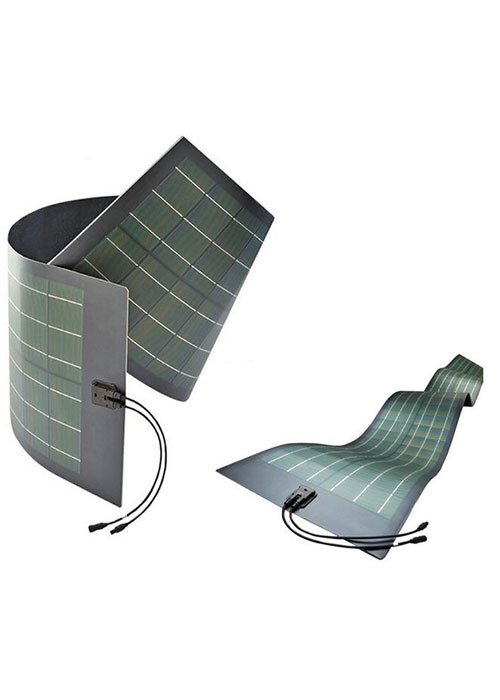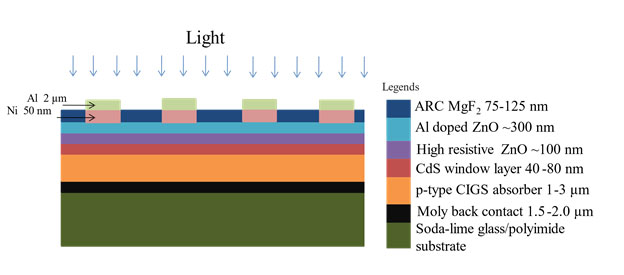
CIGS solar cell technology is an alternate to silicon (Si) solar cell technology and module efficiency is comparable. There are several significant benefits in using CIGS technology..
For CIGS solar cells fabrication two types of device structures are used, (i) substrate structure, and (ii) superstrate structure. In the former, opaque substrates are used and, in the latter, a transparent glass substrate is used, and light enters through glass.

Schematic cross-section of CIGS solar cells having substrate structure. Heterojunction is formed at the p-type CIGS/n-type CdS interface. Top and bottom contacts are Al/Ni and molybdenum respectively. A high resistive intrinsic ZnO layer is used to prevent shunting path due to diffusion of aluminum into the absorber from Al-doped ZnO layer. For lateral conduction of photogenerated electrons to Ni/Al grids, a low resistive Al-doped ZnO is used.
Prog. Mat. Sci., 110 (2020) 100619 (20p).
Energy Environ. Sci., 10 (2017) 1306 – 1319.
Mat. Res. Bulletin, 29 (1994) 195 – 202.
At GVN SolarPower, for energy applications, we are dedicated to developing efficient and affordable solar cell technologies through research and development.
132 92 Ave, Skye Pl.
Surrey V3V 6T6
Vancouver BC, Canada
+1 604 203 2409
jkr@gvnsolarpower.com
careers@gvnsolarpower.com
While contacting us by email, please send a Cc to gvnsolarpower@gmail.com
Copyrights © 2023 GVN SolarPower Inc. Developed & Hosted by YOGA’S IT Solutions.